<< Previous | Displaying results 4251-4275 of 6771 for "" | Next >>
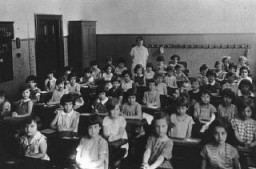
The Nazi regime carried out a campaign to "cleanse" German society of individuals they viewed as biological threats. Even before the Nazi rise to power, many German doctors and scientists supported ideas about racial hygiene. During World War II, a number of German physicians conducted painful and often deadly experiments on thousands of prisoners without their consent.
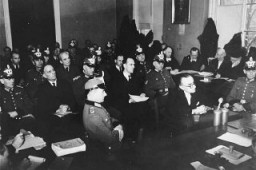
The French government established the Gurs camp in April 1939, before war with Germany and wel...
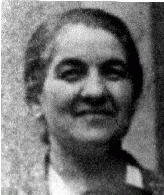
The French government established the Gurs camp in 1939, before the war began and before Germany occupied France. Gurs initially served as a detention center for political refugees and later held German Jewish refugees. In June 1940, France signed a...
J Malan Heslop was a photographer in the US Army Signal Corps. After the camps were liberated, the Signal Corps had a key role in documenting the atrocities of the Holocaust. Heslop captured the plight of survivors in the Ebensee subcamp of Mauthaus...
A childsize violin that belonged to Boruch Golden (Gordon), who was killed along with his mother and brother at the Ponary killing site in September 1943. Boruch was born in 1930, and was one of four children. His parents, Moshe and Basia Golden (Gordon), raised their family in Swieciany (Svencionys), Lithuania. After the German invasion of the Soviet Union in June 1941, the family was forced into the Swieciany ghetto. When that ghetto was later liquidated in 1943, the family was sent to the Vilna…
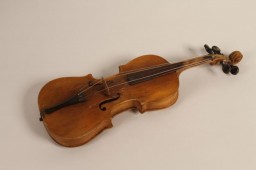
Nazi propaganda poster titled “The Stalin Constitution?” printed October 10, 1943. The Nazis often used propaganda in occupied territories to secure the compliance and even support of local populations. In Ukraine and other occupied regions of the Soviet Union, the Nazis created propaganda that exploited preexisting discontent with the Soviet regime. They also tried to exploit preexisting anti-Jewish sentiment and sharpen divisions between Jews and non-Jews. One way of achieving this was by creating…
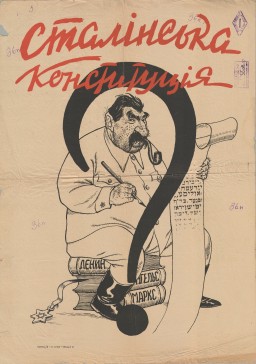
This large, lidded wooden chest was used by the Council for Aid to Jews (codenamed “Żegota”) to hide false identity documents from Nazi authorities. Żegota was an underground rescue organization of Poles and Jews in German-occupied Poland and operated from December 1942 to January 1945. Supported by the Polish government-in-exile, it coordinated efforts to save Jews in German-occupied Poland from Nazi persecution and murder. One of Żegota’s most impactful clandestine activities was producing and…
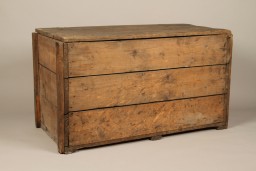
Poster titled “The United Nations Fight For Freedom.” It was one of many posters produced by the Office of War Information, the United States’s official propaganda agency during World War II. Canadian-American commercial artist Steve Broder (1902-1992) designed this work to bolster confidence in the Allied war effort against the Axis Powers (Nazi Germany, Fascist Italy, and Imperial Japan). It depicts the 30 flags of countries that signed the Declaration by the United Nations and declared war on the…
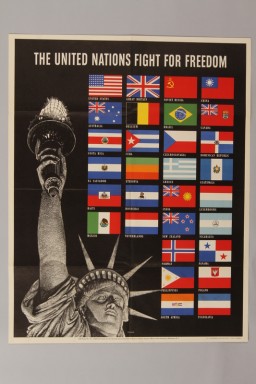
Drawing of the SS Patria, part of the illustrated diary of Egon Weiss which he compiled during and immediately after his detention in the Atlit internment camp.
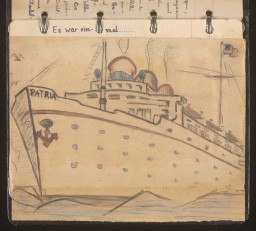
Carl Atkin was United Nations Relief and Rehabilitation Administration (UNRRA) director at the Deggendorf displaced persons camp. He received a songbook created by the survivors in his care. This page shows one of the songs compiled in the book.
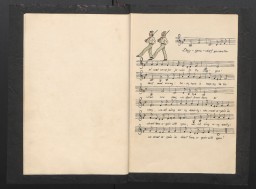
In the 25-point program, Nazi Party members publicly declared their intention to segregate Jews from "Aryan" society and to abrogate Jews' political, legal, and civil rights. Germany, 1931.
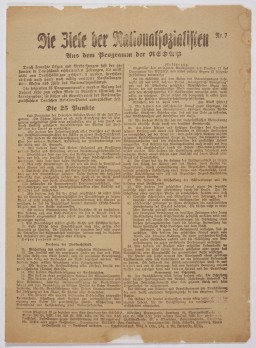
We would like to thank Crown Family Philanthropies, Abe and Ida Cooper Foundation, the Claims Conference, EVZ, and BMF for supporting the ongoing work to create content and resources for the Holocaust Encyclopedia. View the list of donor acknowledgement.